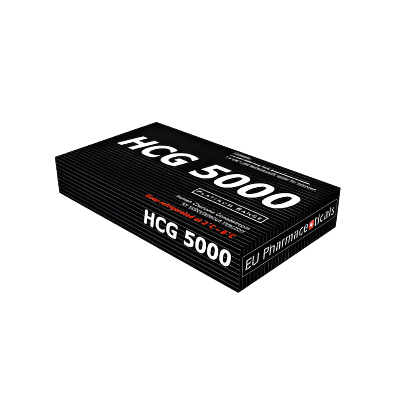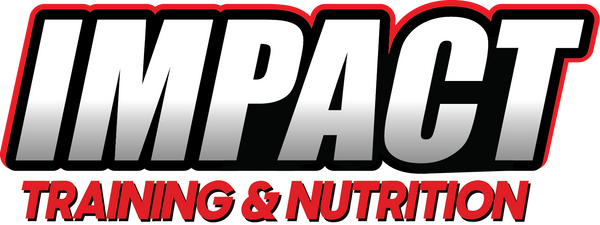EU Pharma - HCG 5000
- Shipping available locally
Human chorionic gonadotropin is a glycoprotein composed of 244 amino acids with a molecular mass of 36.7 kDa.
It is heterodimeric, with an α (alpha) subunit identical to that of luteinizing hormone (LH), follicle-stimulating hormone (FSH), thyroid-stimulating hormone (TSH), and β (beta) subunit that is unique to hCG.
- The α (alpha) subunit is 92 amino acids long. The sequence of the alpha unit can be found on UniProtKB with ID: P01215 [25-116].
- The β-subunit of hCG gonadotropin contains 145 amino acids, encoded by six highly-homologous genes that are arranged in tandem and inverted pairs on chromosome 19q13.3 – CGB (1, 2, 3, 5, 7, 8). The sequence of the beta unit can be found on UniProtKB with ID: P01233[21-165].
- The two subunits create a small hydrophobic core surrounded by a high surface area-to-volume ratio: 2.8 times that of a sphere. The vast majority of the outer amino acids are hydrophilic.
Human chorionic gonadotropin interacts with the LHCG receptor and promotes the maintenance of the corpus luteum during the beginning of pregnancy, causing it to secrete the hormone progesterone. Progesterone enriches the uterus with a thick lining of blood vessels and capillaries so that it can sustain the growing fetus. Due to its highly-negative charge, HCG may repel the immune cells of the mother, protecting the fetus during the first trimester. It has also been hypothesized that HCG may be a placental link for the development of local maternal immunotolerance. For example, hCG-treated endometrial cells induce an increase in T cell apoptosis (dissolution of T-cells). These results suggest that HCG may be a link in the development of peritrophoblastic immune tolerance, and may facilitate the trophoblast invasion, which is known to expedite fetal development in the endometrium. It has also been suggested that HCG levels are linked to the severity of morning sickness in pregnant women. Because of its similarity to LH, HCG can also be used clinically to induce ovulation in the ovaries as well as testosterone production in the testes. As the most abundant biological source is women who are presently pregnant, some organizations collect urine from pregnant women to extract HCG for use in fertility treatment.
Human chorionic gonadotropin also plays a role in cellular differentiation/proliferation and may activate apoptosis.
Production
Like other gonadotropins, HCG can be extracted from urine or by genetic modification. Pregnyl, Follutein, Profasi, Choragon and Novarel use the former method, derived from the urine of pregnant women. Ovidrel, on the other hand, is a product of recombinant DNA. HCG is produced from the syncytiotrophoblast cell layer.
Testing
Levels of HCG may be measured in the blood or urine. Most commonly, this is done as a pregnancy test, intended to indicate the presence or absence of an implanted embryo. Testing for HCG may also be done when diagnosing or monitoring germ cell tumors and gestational trophoblastic disease.
Most tests employ a monoclonal antibody, which is specific to the β-subunit of HCG (β-hCG). This procedure is employed to ensure that tests do not make false positives by confusing HCG with LH and FSH. (The latter two are always present at varying levels in the body, whereas the presence of HCG almost always indicates pregnancy.)
- The urine test may be a chromatographic immunoassay or any of several other test formats, home-, physician’s office-, or laboratory-based. Published detection thresholds range from 20 to 100 mIU/ml, depending on the brand of test. Early in pregnancy, more accurate results may be obtained by using the first urine of the morning (when HCG levels are highest). When the urine is dilute (specific gravity less than 1.015), the HCG concentration may not be representative of the blood concentration, and the test may be falsely negative.
- The serum test, using 2-4 mL of venous blood, is typically a chemiluminescent or fluorimetric immunoassay that can detect βhCG levels as low as 5 mIU/ml and allows quantification of the βhCG concentration. The ability to quantitate the βhCG level is useful in the monitoring germ cell and trophoblastic tumors, followup care after miscarriage and in diagnosis of and follow-up care after treatment of ectopic pregnancy. The lack of a visible fetus on vaginal ultrasound after the βhCG levels have reached 1500 mIU/ml is strongly indicative of an ectopic pregnancy.
- As pregnancy tests, quantitative blood tests and the most sensitive urine tests usually detect HCG between 6 to 12 days after ovulation. However, it must be taken into account that total HCG levels may vary in a very wide range within the first 4 weeks of gestation, leading to false results during this period of time.
- Gestational trophoblastic disease like Hydatidiform moles (“molar pregnancy”) or Choriocarcinoma may produce high levels of βhCG (due to the presence of syncytialtrophoblasts- part of the villi that make up the placenta) despite the absence of an embryo. This, as well as several other conditions, can lead to elevated HCG readings in the absence of pregnancy.
- HCG levels are also a component of the triple test, a screening test for certain fetal chromosomal abnormalities/birth defects.
Reference levels
The following is a list of serum HCG levels. (LMP is the last menstrual period.) The levels grow exponentially after conception and implantation.
Uses
1) Tumor marker
Human chorionic gonadotropin can be used as a tumor marker, as its β subunit is secreted by some cancers including seminoma, choriocarcinoma, germ cell tumors, hydatidiform mole formation, teratoma with elements of choriocarcinoma, and islet cell tumor. For this reason a positive result in males can be a test for testicular cancer. The normal range for men is between 0-5 mIU/mL. Combined with alpha-fetoprotein, β-HCG is an excellent tumor marker for the monitoring of germ cell tumors.
2) Fertility
Human chorionic gonadotropin is extensively used parenterally as an ovulation inducer in lieu of luteinizing hormone. In the presence of one or more mature ovarian follicles, ovulation can be triggered by the administration of HCG. As ovulation will happen between 38 and 40 hours after a single HCG injection, procedures can be scheduled to take advantage of this time sequence, such as intrauterine insemination or sexual intercourse. Also, patients that undergo IVF, in general, receive HCG to trigger the ovulation process, but have an oocyte retrieval performed at about 34 to 36 hours after injection by, a few hours before the eggs actually would be released from the ovary.
As HCG supports the corpus luteum, administration of HCG is used in certain circumstances to enhance the production of progesterone.
In the male, HCG injections are used to stimulate the leydig cells to synthesize testosterone. The intratesticular testosterone is necessary for spermatogenesis from the sertoli cells. Typical uses for HCG in men include hypogonadism and fertility treatment.
During first few months of pregnancy, the transmission of HIV-1 from woman to fetus is extremely rare. It has been suggested that this is due to the high concentration of HCG, and that the beta-subunit of this protein is active against HIV-1.
3) Weight loss
A controversial usage of HCG is as an adjunct to the British endocrinologist Albert T. W. Simeons’ ultra-low-calorie weight-loss diet (less than 500 calories). Simeons, while studying pregnant women in India on a calorie-deficient diet, and “fat boys” with pituitary problems (Frölich’s syndrome) treated with low-dose hCG, claimed that both lost fat rather than lean (muscle) tissue. He reasoned that HCG must be programming the hypothalamus to do this in the former cases in order to protect the developing fetus by promoting mobilization and consumption of abnormal, excessive adipose deposits. Simeons later published a book entitled Pounds and Inches, designed to combat obesity. Simeons, practicing at Salvator Mundi International Hospital in Rome, Italy, recommended low-dose daily hCG injections (125 IU) in combination with a customized ultra-low-calorie (500 cal/day, high-protein, low-carbohydrate/fat) diet loss of adipose tissue without loss of lean tissue. After Simeons’ death, the diet started to spread to specialized centers and via popularization by individuals, such as the controversial author Kevin Trudeau, famous for promotion of alternative therapies and treatments.
The controversy proceeds from warnings by the Journal of the American Medical Association and the American Journal of Clinical Nutrition that HCG is neither safe nor effective as a weight-loss aid.
A meta-analysis found that studies supporting hCG for weight loss were of poor methodological quality and concluded that “there is no scientific evidence that HCG is effective in the treatment of obesity; it does not bring about weight-loss or fat-redistribution, nor does it reduce hunger or induce a feeling of well-being”.
Couldn't load pickup availability
Ingredients
Shipping Policy
NATIONAL DELIVERIES
Impact Nutrition will deliver your order to your home or office at most locations within the Republic of South Africa.
DELIVERY SERVICES
Impact Nutrition uses a trusted, well established courier company for the shipping and delivery of your parcel to ensure you get it on time and in good condition. Once we’ve received your order, we’ll send you an e-mail/sms with tracking details. To follow up on the shipping of your order, please contact Jason@impactnutrition.co.za.
Courier companies do not deliver to P.O. Boxes or the post office, please provide the following information when requested at checkout:
- Contact Name and Number
- Street Address (If complex Name of Complex and Unit number)
- City/Town
- Postal Code
Please note that Impact Nutrition cannot refund any product(s) which were not delivered due to an incorrect address.
DELIVERY SERVICES, DELIVERY TIMELINES AND DELIVERY RATES
The following delivery options with associated rates are provided with our courier services:
Standard Delivery
Delivery Timelines: 2-5 business days
Rate: R150
The courier company only delivers during normal working hours so please ensure a person will be home during working hours to receive your parcel or otherwise use your Work Address.
Delivery to remote areas, plots, farms, mines, power stations, etc. and special deliveries to embassies, government departments, etc. will carry additional surcharges. These additional surcharges can only be confirmed with shipment confirmation, and the customer will be contacted at this time to first affect the payment of the additional surcharge prior to order confirmation. In the event that the customer is not prepared to pay these additional surcharges, then the order will be cancelled, and the customer will be refunded via EFT payment.
Return Policy
RETURNS AND REFUND POLICY
The customer must notify Impact Nutrition in writing within 7 days of receiving the product and return the product to the Impact Nutrition. When returning any product, please ensure that it is returned in its original condition and returned with the original packaging – including any documentation, manuals, warranty cards and other accessories. The cost of returning the product to Impact Nutrition is for the consumer’s account, however at our discretion, Impact Nutrition may offer to reimburse the return transportation costs. This is assessed on a case-by-case basis by Impact Nutrition.
Please contact us on jason@impactnutrition.co.za for our return address.
Please allow 14 – 30 days for your return to be inspected and for us to create your credit and arrange your refund. In some cases, a handling fee of up to 15% will be levied against the order value.
Should a product be faulty / damaged, we will arrange with the manufacturer / importer / supplier to assess the product. We are restricted to the supplier’s guarantees and warranties, which may mean replacing the product.



